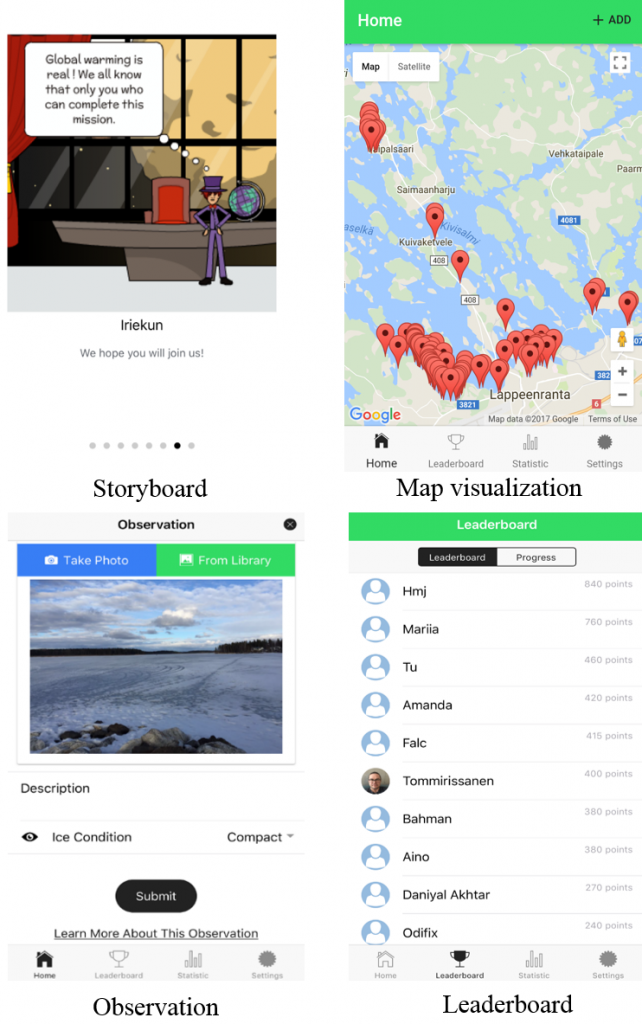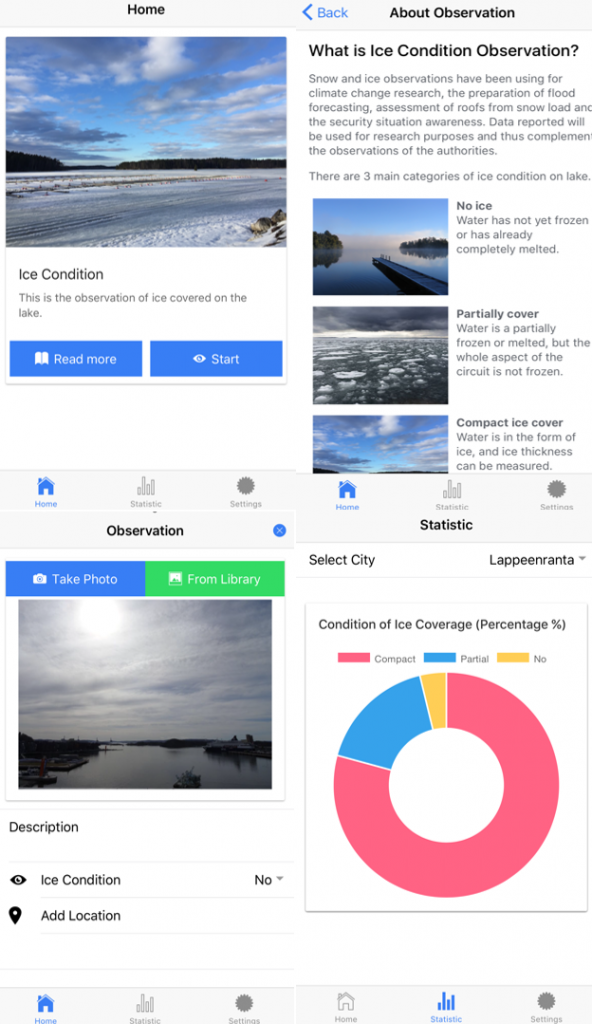Text below writen by @Antti Knutas
Jarvi used a participatory sensing approach where people actively participate in monitoring their environment. Participatory sensing can be said to be a type of civic technology in the sense that it empowers people to actively participate, instead of being passive recipients of environmental data. In this case the participants monitored the thickness of lake ice in Lappeenranta, Finland, where there was a pre-existing community. This community for example maintains their section of the Lake Wiki.
In our approach, we created two applications for monitoring lake ice thickness, one with gamification and one without to specifically evaluate the impact of gamification. The gamified application had a statistically significant effect on user effectiveness, as measured by the number of interactions and new data inputted by the user compared to the time the application was open. Both groups found the application as usable and as satisfying to use. We reflected that there is a need for participatory sensing design to:
- Support personalized notification triggers;
- Support customizable challenges to avoid negative feedback (e.g. discouragement) triggered from the lack of achievement;
- Support social interaction between users;
- Allow users to explore submitted data;
- Enhance indoor experiences;
- Support interactive feedback.
Read the full study here.



